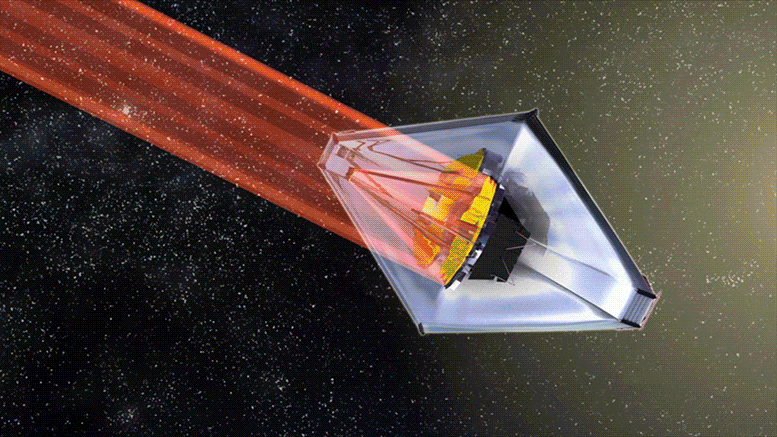
Él: posible fecha objetivo por[{» attribute=»»>James Webb Space Telescope …
An update about the next generation of spacesuits ….
And testing our lunar-roving robot … a few of the stories to tell you about – This Week at NASA!
https://www.youtube.com/watch?v=vO4lzzfeZg0:
Las primeras imágenes a todo color aparecerán pronto desde el Telescopio Espacial Webb
Nuestro: Telescopio espacial James Webb El equipo planea publicar las primeras imágenes en color del telescopio: datos espectroscópicos el 12 de julio. Imágenes de prueba temprana ya ha mostrado severidad sin precedentes Desde la escena de infrarrojos Web. Sin embargo, las imágenes y los datos publicados el 12 de julio serán los primeros en mostrar todas las capacidades científicas de Webb.

El artista ilustra a dos prácticos miembros de la tripulación trabajando en la luna. Uno en primer plano levanta el acantilado para explorarlo y el otro fotografía el sitio en el fondo. Crédito: NASA
La NASA se asocia para proporcionar nuevos servicios de paseos espaciales
El 1 de junio, anunciamos que: Espacio del axioma: l Collins Aerospace desarrollará y proporcionará naves espaciales de próxima generación y sistemas de viaje espacial para que los astronautas trabajen fuera de la Estación Espacial Internacional para estudiar la superficie de la luna. misiones artemisaև prepararse para misiones humanas[{» attribute=»»>Mars. Learn more about spacesuits and spacewalking at nasa.gov/suitup.

Illustration of NASA’s Volatiles Investigating Polar Exploration Rover (VIPER) on the surface of the Moon. Credit: NASA Ames/Daniel Rutter
Testing NASA’s Resource-Hunting Moon Rover
Teams at our Glenn Research Center in Cleveland recently conducted full-scale egress testing with the prototype of our VIPER Moon rover to verify that it will be able to exit the Astrobotic Griffin lunar lander safely and effectively after landing on the Moon. VIPER is targeted for delivery to the Moon’s South Pole in late 2023 to map valuable resources for future Artemis missions.

Hurricane Larry is pictured churning in the Atlantic Ocean as the International Space Station orbited 263 miles above. Credit: NASA
NASA Prepared to Monitor 2022 Hurricane Season from Space
The 2022 Atlantic Ocean hurricane season kicked off on June 1 and runs through November 30. NASA plays an important role in the science of hurricanes. Our fleet of Earth-observing satellites can monitor storms from the unique vantage point of space to collect data that is also useful for disaster preparedness, response, mitigation, and recovery. Learn more at nasa.gov/hurricanes.

The Apollo 1 monument at Arlington National Cemetery was dedicated on Thursday, June 2, 2022, in Arlington, Va. The monument honors and memorializes the Apollo 1 crew of Virgil I. “Gus” Grissom, Edward H. White II, and Roger B. Chaffee. Family members of Apollo 1 astronaut Roger B. Chaffee were joined by NASA Administrator Bill Nelson as they placed flowers at the monument during its dedication. Credit: NASA/Bill Ingalls
Apollo 1 Monument Dedicated at Arlington National Cemetery
On June 2, NASA Administrator Bill Nelson and others attended the Apollo 1 Monument Dedication at Arlington National Cemetery, in Virginia. The monument honors and memorializes the Apollo 1 crew – astronauts Gus Grissom, Ed White, and Roger Chaffee – and others who lost their lives in support of the agency’s mission of exploration and discovery.
That’s what’s up this week @NASA.

Aficionado a los viajes. Lector exasperantemente humilde. Especialista en internet incurable
 Impulsse.la Complete News World
Impulsse.la Complete News World
